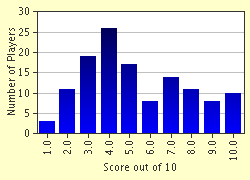Quiz Answer Key and Fun Facts
1. From which London railway station would you catch a train to Oxford?
2. What is Carfax?
3. The Martyrs' Memorial commemorates the burning at the stake of three prominent English clerics in the reign of Mary I. Which of the following was NOT one of them?
4. What is the name of the area of common land to the north-west of the city?
5. Which river is spanned by Magdalen Bridge?
6. Oxfam, one of Britain's leading charities, was founded in Oxford and still has its headquarters in the Summertown area of the city. In which decade was it founded?
7. Frank Cooper Ltd is a company which is closely associated with Oxford, even though it has not manufactured in the city for more than three decades. What does it make?
8. What is the name of the fair held in Oxford in September each year?
9. Which English poet first used the phrase "dreaming spires" in connection with Oxford?
10. In which season did Oxford United Football Club first appear in the Football League?
Source: Author
TabbyTom
This quiz was reviewed by FunTrivia editor
minch before going online.
Any errors found in FunTrivia content are routinely corrected through our feedback system.

